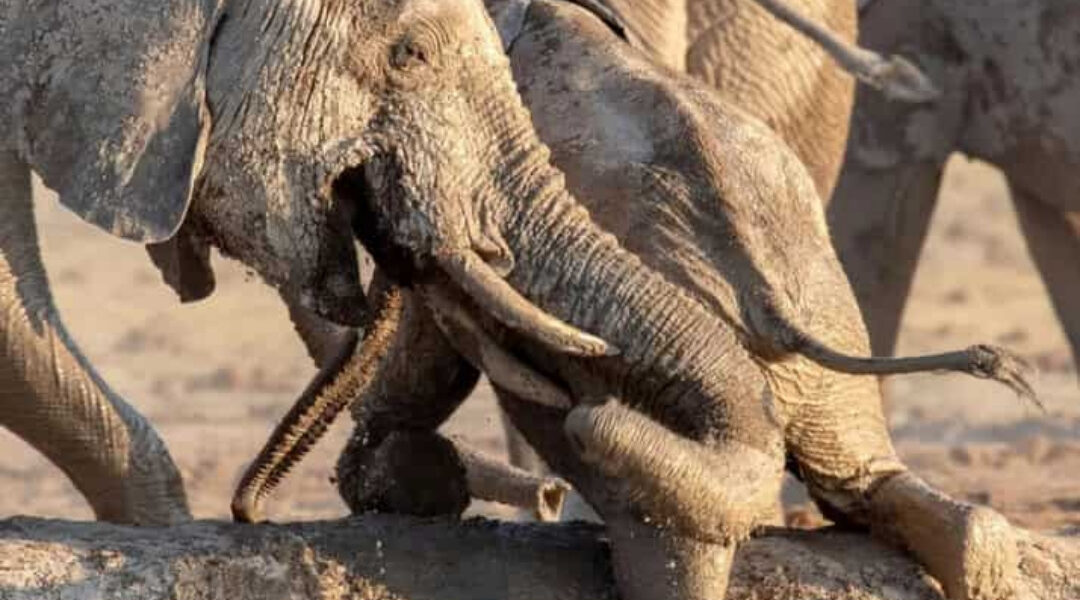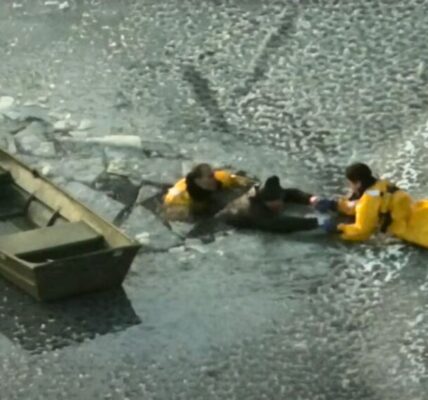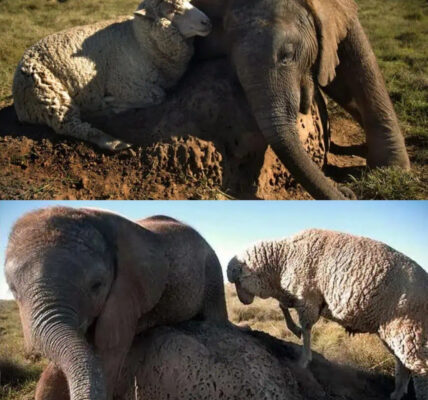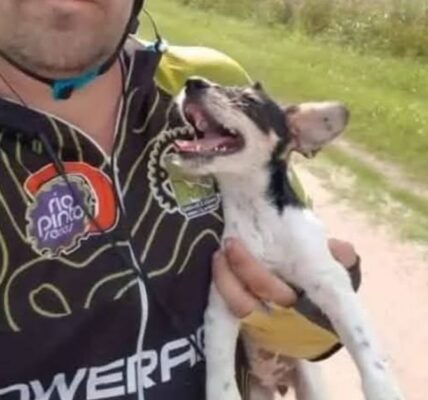It was a quiet afternoon at Botswana’s Nxai Pan Park — the kind where the air hums with heat and the savanna stretches endlessly, golden and still.

Richard and Vanessa Tustin, wildlife photographers from Australia, had been waiting for hours beside a watering hole, cameras poised, hoping to capture something special. What they witnessed instead was something extraordinary — a moment of raw emotion, instinct, and unity that few ever get to see.
From across the plain came a cry — deep, haunting, unmistakably desperate. A young elephant calf was trapped in the muddy pool, its tiny frame flailing helplessly in the thick water. The baby had slipped and couldn’t climb back up the steep, slick edge.
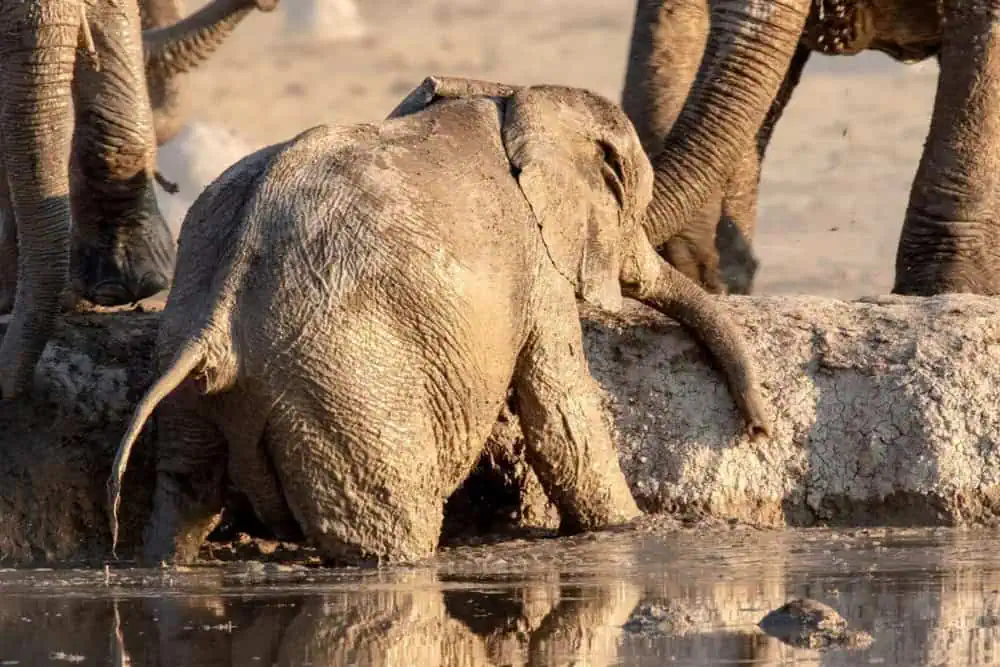
Its mother stood nearby, frantic, trumpeting in distress as she tried again and again to pull her baby free with her trunk.
“She was screaming in despair,” Richard recalled. “You could see it in her eyes — pure terror.”
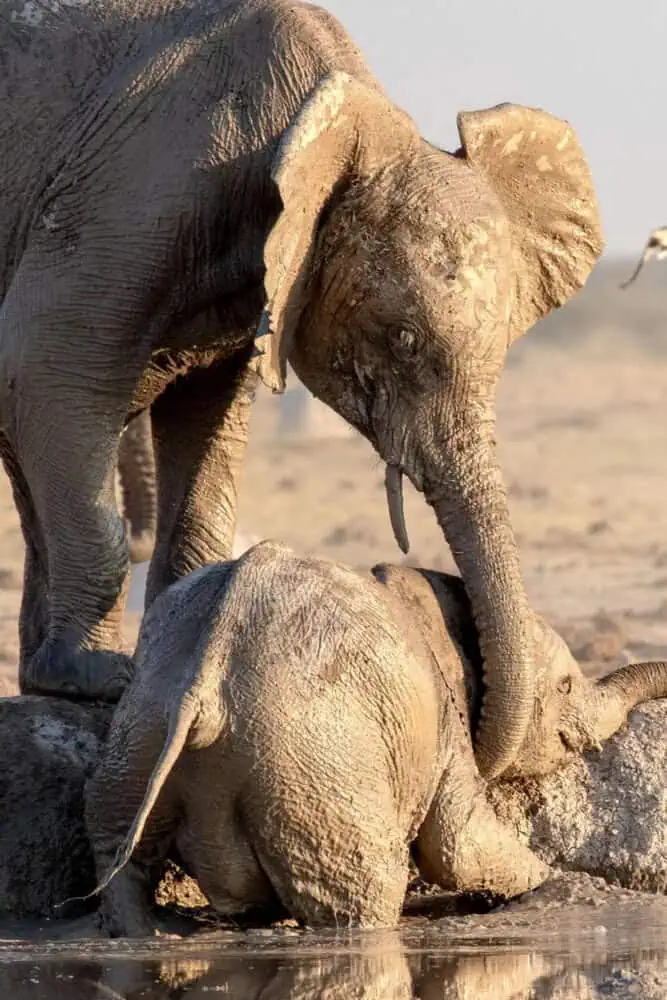
He believed this was her firstborn, which might explain the panic. Her enormous feet churned up the mud as she leaned over, trying to grip her calf, but the more she struggled, the deeper he sank.
The Tustins could only watch, cameras rolling, hearts breaking. “It’s hard not to feel it,” Vanessa later said. “You can sense the fear — and the love.”
Then, suddenly, the mother stopped. She stepped back and let out a low, trembling call.

From the herd nearby, a larger female approached — older, stronger, confident. Without hesitation, the matriarch stepped into the muddy water, nudging the mother gently aside as if to say, I’ve got this.
With one precise motion, she wrapped her trunk around the calf’s body, braced her massive legs, and lifted. Mud splashed, the calf squealed — and then, in a heartbeat, it was over. The baby was free.
For a moment, there was silence — the kind of silence that feels sacred. Then, the entire herd erupted in a chorus of trumpets that echoed across the plains. “It was incredible,” Richard said. “They were celebrating. It was pure joy.”

The rescue had taken barely a minute, but its impact lasted far longer. Watching it, the Tustins were reminded of something profound: these animals, with their immense strength and intelligence, share bonds as deep and emotional as any human family.
Elephants, as experts at ElephantVoices explain, live within complex social structures — family units that depend on cooperation, empathy, and leadership. What the Tustins saw that day wasn’t just instinct; it was compassion in motion.
As the herd gathered protectively around the trembling calf, the mother reached out, brushing her trunk gently over her baby’s back, touching her savior’s face in silent gratitude. It was a gesture of recognition — one mother to another.
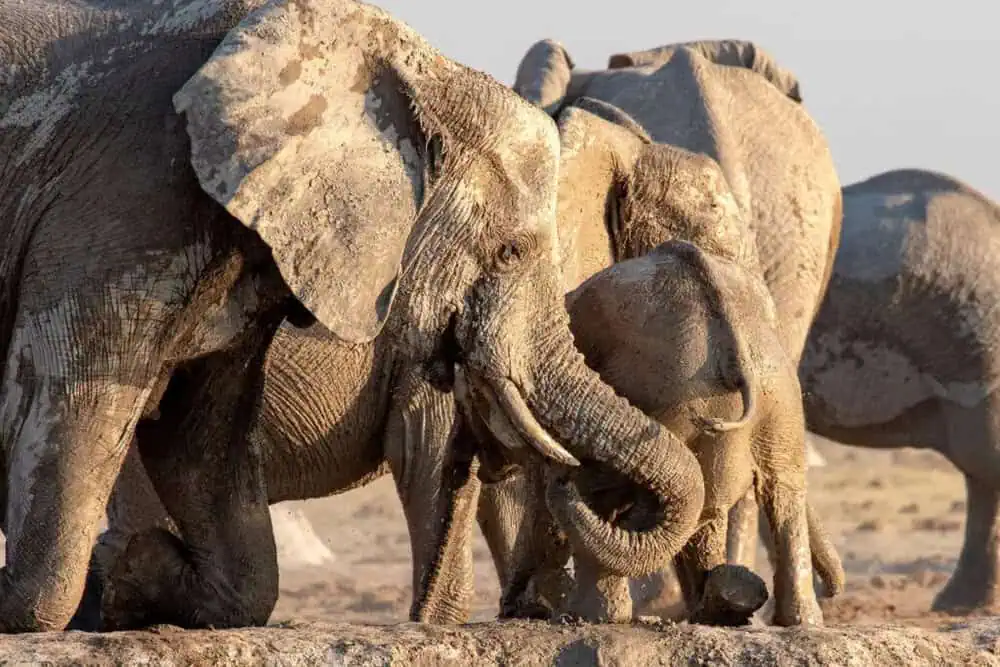
Richard later reflected, “It’s moments like that that remind you how connected we all are. We could learn a lot from them — about family, about empathy, about helping when it matters most.”
On that hot day in Nxai Pan, a frightened calf was pulled from the mud.
But more than that, humanity was given a reminder — that kindness, courage, and unity aren’t uniquely human traits. Sometimes, they thunder across the savanna on four legs, under the watchful eyes of a herd that never leaves one of its own behind.
